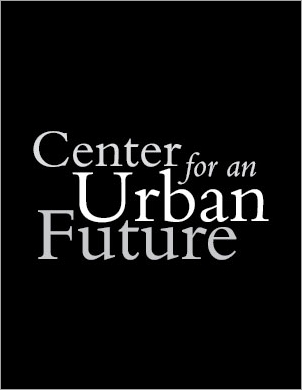
Testimony - February 2002
Guiding Principles for the Lower Manhattan Development Commission
Testimony of Jonathan Bowles before the City Council, February 25, 2002.
by Jonathan Bowles
Tags: economic growth
Good morning. My name is Jonathan Bowles and I am the research director of the Center for an Urban Future, a non-profit policy institute that has issued numerous studies and convened many forums about economic development issues important to the future of New York City.
Thank you for inviting me to testify this morning. I congratulate the Council for holding this hearing and I look forward to the Council's voice and oversight on the rebuilding process in the months to come.
I would like to start off by saying that I am unhappy with the way the Lower Manhattan Development Commission was created, with the Governor clearly calling the shots and with virtually no representatives appointed by the new mayor of New York City, who was elected after September 11th, at least partially based on his early statements about rebuilding lower Manhattan.
But with that said, I am very pleased--actually happily surprised--with the early efforts of this commission. In particular, I commend the commission for taking a deliberate approach to its task, listening to family members of victims as well as civic groups, business leaders and elected representatives—-rather than rushing into action or letting individual developers dictate what gets built.
Some have criticized the commission for moving ahead too slowly, for being too deliberate and not firming up any specific plans for future developments at the World Trade Center site. However, I strongly believe that we should not rush ahead with any new development. This is not any typical development project. What happens on this massive site will not only have enormous symbolic importance to the victims of those killed in September 11th and to the countless New Yorkers and Americans who were permanently impacted by this attack; it will have a immense impact on an area that has long been one of the world’s most important business districts and a crucial engine for New York’s economy. Moreover, the rebuilding process not only requires new physical space; it requires unprecedented new infrastructure investments. To be specific, this needs to be done right; it requires planning and collaboration.
But while it is too early to determine exactly what kind of buildings should go up and where, this commission should soon demonstrate a strong commitment to a handful of infrastructure improvements that are absolutely critical to the long term viability of lower Manhattan and to a set of basic principles that will guide the rebuilding process. Doing this will send a strong message to companies and residents that this commission—-and all of the government partners that back it-—is wholly committed to rebuilding lower Manhattan. It will also send a strong message to leaders in Washington and Albany that New York City has its act together and that more government aid is needed to get the job done.
Along these lines, I would suggest the following:
1. A fitting memorial must be the center of any new development.
2. A commitment to new regional transportation connections to lower Manhattan and a new transit hub that does a better job connecting commuter rail lines with subways. This is a must. Tax incentives clearly aren’t going to be enough for lower Manhattan to compete in the long run with other office districts. These transit improvements are going to take time and they're not going to be cheap. But the commission must make a strong case that this is the starting point for any long term plan to make lower Manhattan whole again. And the commission must begin to make the argument to Washington and Albany that New York City needs help paying for it.
3. The memorial and any new building constructed in lower Manhattan should be done in coordination with plans to develop a new transportation hub in the area.
4. Lower Manhattan must become more of a 24-hour community. While we should do all we can to ensure that lower Manhattan remains a financial center, but we must resist the temptation to simply build office buildings intended for use by large financial corporations. There should be a mix of residential, office and retail uses. In addition, there should be an understanding that the new office developments should be aimed at small businesses, technology firms, biotech start-ups and non-profits--many of whom have different space requirements and cost restrictions than typical corporate users.
5. Since lower Manhattan is going to have to attract an array of small businesses and firms from a cross-section of industries, the commission would be wise to reach out to industry associations, business leaders in a variety of sectors, directors of non-profit groups located in lower Manhattan and heads of academic institutions. In addition, the city and state economic development agencies should engage in a sector-oriented model of economic development in an effort to strengthen entire industries, not just individual firms.